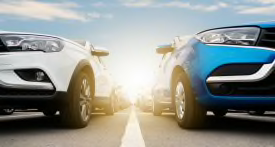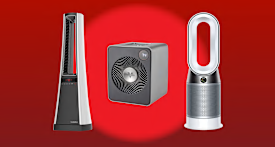The optional third row is no more, and the infotainment system is likely getting worse
The compact Tiguan is the brand’s top-selling vehicle in the United States. In our tests of the outgoing model, we measured sluggish acceleration but praised its user-friendly controls and very roomy rear seats. We’re glad to see that the Tiguan gains 17 horsepower and loses 170 pounds—a potent combination that should help with highway merges and passing maneuvers. Unfortunately, the optional third row and straightforward controls will be gone as part of the 2025 redesign.
Improvements include four additional airbags and a lot of standard active safety and driver assistance features.
Volkswagen has yet to share details about how much the new Tiguan will cost or what kind of fuel economy it will achieve, although the automaker said we should expect improved mileage compared with the outgoing model. The previous-generation Tiguan got 25 mpg overall in our tests. Unlike many of the other SUVs in its class, there’s no hybrid version of the Tiguan.
It competes with the Chevrolet Equinox, Ford Escape, Honda CR-V, Hyundai Tucson, Kia Sportage, Mazda CX-5, Mazda CX-50, Mitsubishi Outlander, Nissan Rogue, Subaru Forester, and Toyota RAV4.
















